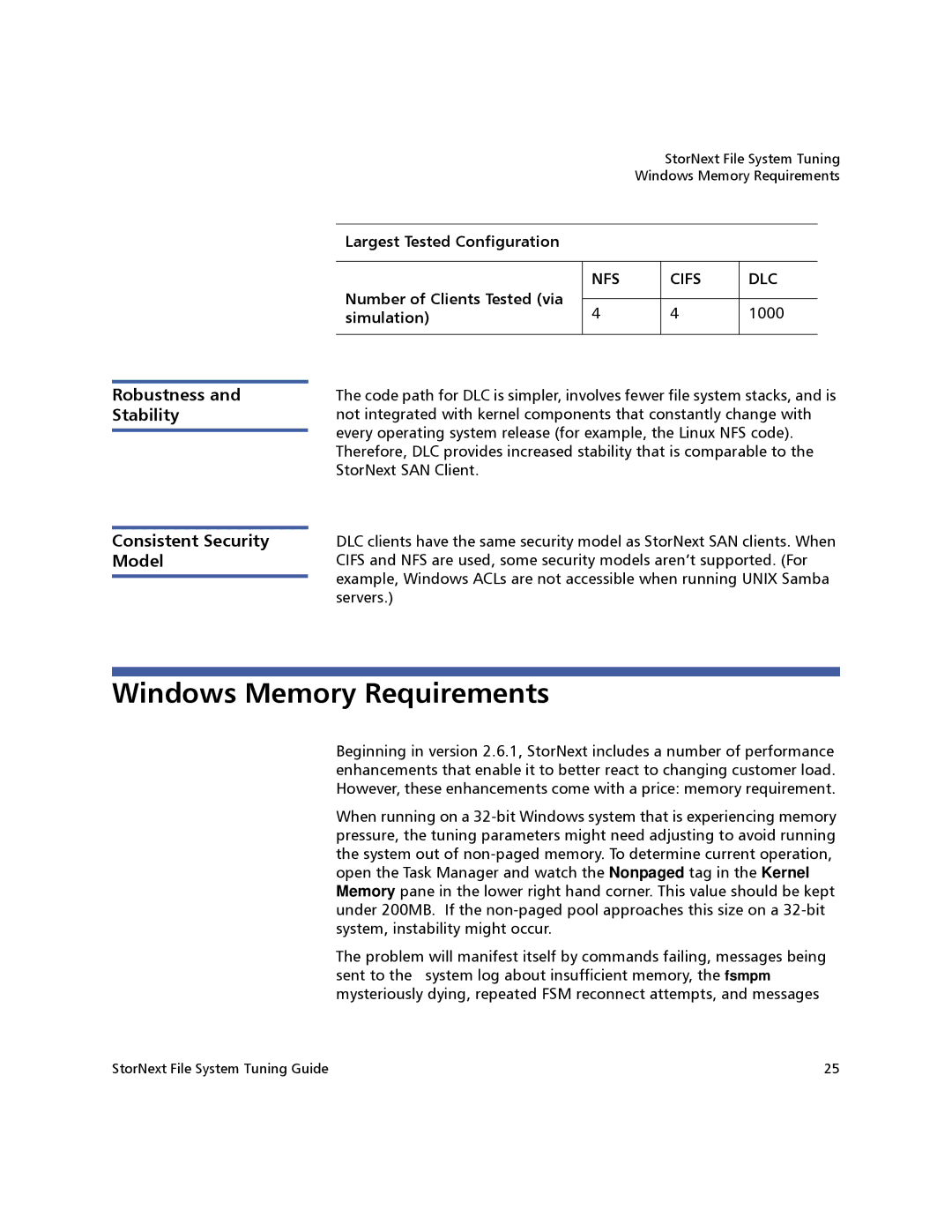
Robustness and Stability
Consistent Security Model
StorNext File System Tuning
Windows Memory Requirements
Largest Tested Configuration
| NFS | CIFS | DLC | |
Number of Clients Tested (via |
|
|
| |
4 | 4 | 1000 | ||
simulation) | ||||
|
|
|
|
The code path for DLC is simpler, involves fewer file system stacks, and is not integrated with kernel components that constantly change with every operating system release (for example, the Linux NFS code). Therefore, DLC provides increased stability that is comparable to the StorNext SAN Client.
DLC clients have the same security model as StorNext SAN clients. When CIFS and NFS are used, some security models aren’t supported. (For example, Windows ACLs are not accessible when running UNIX Samba servers.)
Windows Memory Requirements
Beginning in version 2.6.1, StorNext includes a number of performance enhancements that enable it to better react to changing customer load. However, these enhancements come with a price: memory requirement.
When running on a
The problem will manifest itself by commands failing, messages being sent to the system log about insufficient memory, the fsmpm mysteriously dying, repeated FSM reconnect attempts, and messages
StorNext File System Tuning Guide | 25 |
